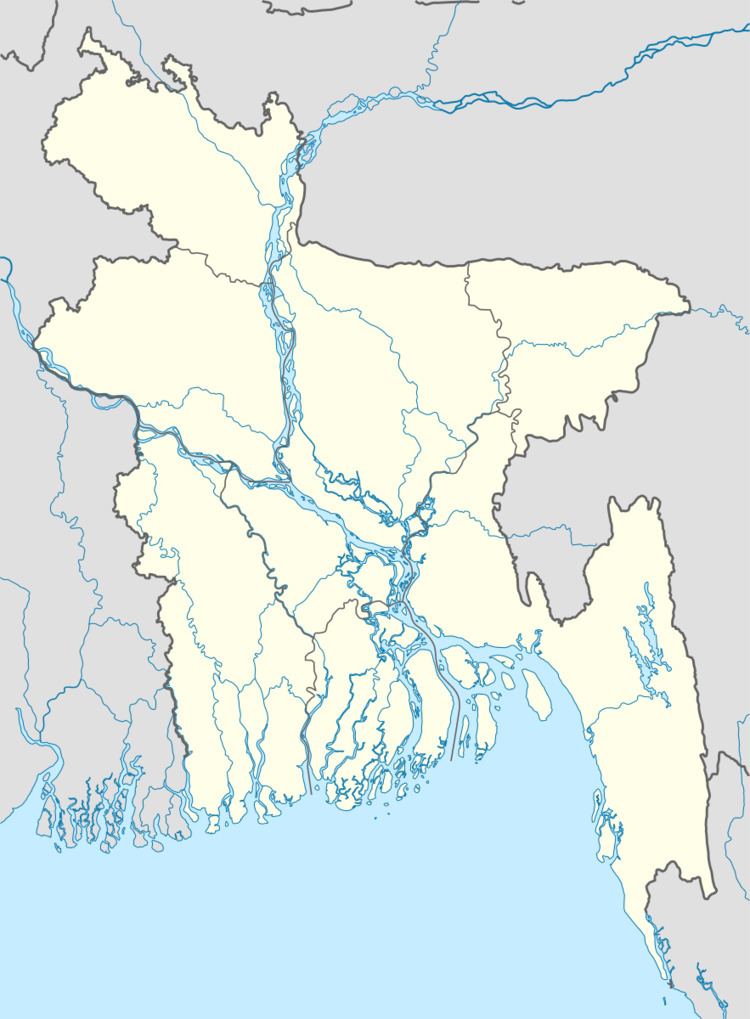Start date April 21, 1971 | Perpetrators Pakistan Army Total number of deaths 8 | |
 | ||
Weapons Light machine gun, Semi-automatic firearm | ||
Sree Angan massacre (Bengali: শ্রীঅঙ্গন হত্যাকান্ড) refers to the massacre of Bengali Hindu monks of Sree Angan monastery in Faridpur on 21 April 1971. Eights monks were killed by the Pakistan Army in the massacre.
Contents
Background
Sree Angan is a Hindu ashram of the Mahanam Sampradaya order of Vaishnavism, in the Goalchamat locality of Faridpur town.
Killings
On 21 April, the Pakistan army landed in Faridpur. From Dhaka they crossed the Padma at Goalundo Ghat and proceeded towards Faridpur. Around evening as they were entering Faridpur they were passing through Goalchamat. At this point, their Bihari collaborator stopped them by the Sree Angan ashram. The Pakistan Army surrounded the ashram and with the help of Bihari collaborators entered the compound. At the news of their arrival, some of the resident monks fled the monastery. But nine monks refused to leave the ashram. At that time the monks were singing kirtan at the prayer hall of the temple. The kirtan had chants of "Jaya Jagatabandhu Hari! Jaya Jaya Jagatabandhu Har!!". It is said that the Pakistani soldiers mistook the chants as "Jai Bangabandhu" and the Bihari collaborators too convinced them that the monks were chanting for victory to Sheikh Mujibur Rahman.
The Pakistani soldiers entered the prayer hall and dragged the monks to the open space in front of the temple, beneath the elephant apple tree adjacent to the temple. One monk, Nabakumar Brahmachari escaped and locked himself up in the room beneath the staircase. The remaining eight were made to stand in a line in front the Pakistani soldiers who had already taken position. According to eye witness accounts, twelve shots were fired one by one. The monks chanted "Jaya Jagatabandhu Hari" as they fell down.
The soldiers and the Bihari collaborators looted valuables and cash from the ashram. On the next morning, the corpses were taken away by a Faridpur Municipality truck. On 26 April, the Pakistan army destroyed the shikhara of the temple using dynamite.
Aftermath
The brutal killings on the very first day of Pakistani occupation created panic among the Hindu citizens. Many of them left the town for countryside. Two surviving monks Amar Bandhu and Haripriya Brahmachari recovered the holy relic of Lord Jagatbandhu and carried them in a casket to India.
According to Rabindranath Trivedi, Captain Jamshed who had commanded the massacre and the subsequent desecration and destruction of the temple, committed suicide in front of the altar of Lord Jagatbandhu Sundar a few days before the surrender of Pakistan Armed Forces on 16 December 1971. He was reportedly buried within the Sree Angan compound, near the pond of the Shiva temple by the collaborators. According to the testimony of freedom fighter Prabodh Kumar Sarkar, Captain Jamshed had become a lunatic before his death. The monks returned after the liberation of Bangladesh. They restored the holy relic and rebuilt the damaged temple. News monks were gradually initiated in the order.
Memorial
In 1996, a memorial was erected in the compound of Sree Angan by the ashram authority. Eight black plaques were raised for the eight deceased monks. The plaques have the shape of truncated pyramid with a square base measuring 40 square centimeters and 95 centimeters in height.
